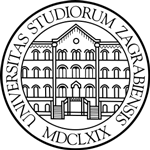The appearance of the visual effect simultaneous contrast depending on the printing substrate
Abstract
The paper presents the results of the comparison of the achromatic simultaneous contrast effect on two different
printing substrates. The presented samples contain 10 different variations of background lightness and have a
value range from 10 to 100% RTV in increments of 10% RTV (external square) that surrounds the primary
stimulus (internal square) of the constant lightness of 50% RTV on a specifically constructed design. In the
psychophysical visual experiment conducted on ten subjects for each sample, the intensity and direction of the
variation of the occurrence of lightness in the CIEΔE00 system has been determined. The verified technique
of simultaneous binocular harmonization was used. The results of the statistical analysis give the direction and
intensity of the effect on a coated and uncoated substrate. The conducted Student’s t-test of the comparison of
arithmetic means of lightness variations clearly shows that the effect of simultaneous contrast is more strongly
manifested on an uncoated substrate on samples with 10%, 20%, 40%, 50%, 90% and 100% of the RTV of the
background (p<0.05). On samples with 30%, 60%, 70% and 80% of the RTV of the background, there are no
statistically significant differences between the samples (p<0.05).






